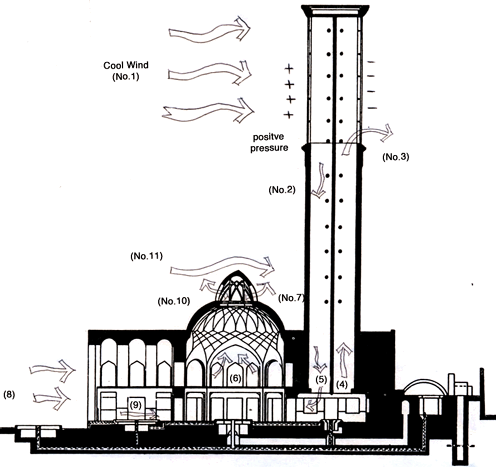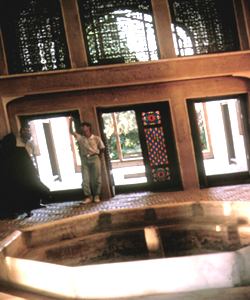Outward-looking houses: the "Dowlat abad" Garden.

The air movement in an Outward-Looking house.
The main part of this system is the very tall badgir (see Fig.2) with a hieght of 33.35meters and an octagonal plan. This badgir catch cool winds (1)*at a higher level, in all directions, and channels them (2,5) into the interior spaces. The dry and warm wind (5) will pass over a pond with a fountain, and with evaporation gets cool and wet. The cool and wet air (6) then flows in to the room. There is an increase in air pressure to windward (1) and decrease to leeward (3), so the badgir will catch the windward air and suck the air to leeward, thus ventilating the interior.

The main hall and
the pond under the dome
This building has a dome on the central hall, that helps ventilation, the warm air rises up under the dome and goes out through its vents, it happens by stack effect without any wind, but if there is wind, the wind encourages ventilation in two ways. First, the wind on the dome causes a negative pressure near the passages and this negative pressure sucks air. The air, (No. 8) in illustration as you see, comes in through the big windows passing ponds and a garden, this is another aid to ventilation. Again as described for the badgir the same thing will happen in cold nights and warm days.
The effect of sun on this dome is useful too, during the day sun shining on this dome and makes it hot, this heat will transfer to surrounding air by convection and radiation, so this air will heat and rise up and give its place to cooler air, so the air flows into the building. The last strategy used here to cool the system is vegetation around the building. They cool and give oxygen to the air. And this fresh air will go through the system.